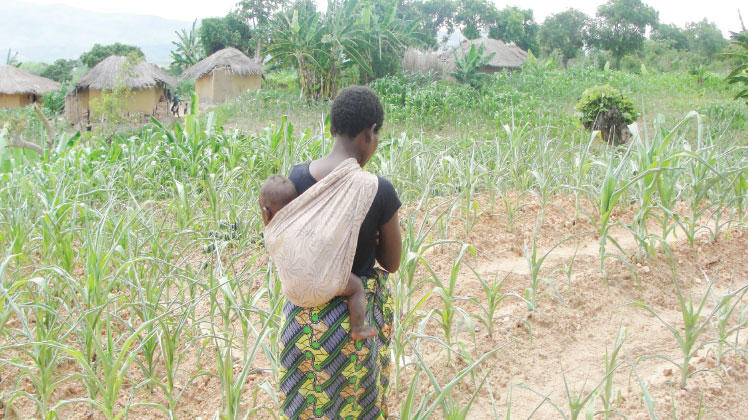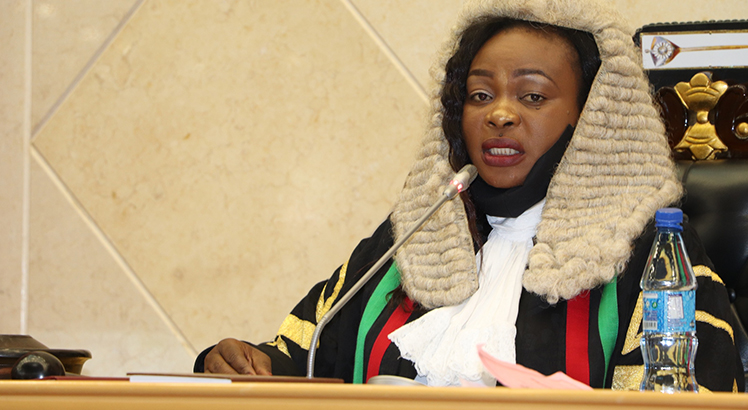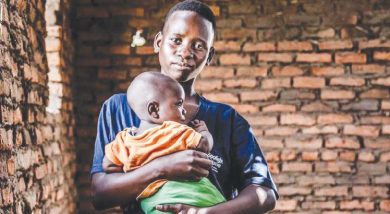Farmers hunger for action
As crops in southern Malawi wilt due to dry spells caused by El Nino weather pattern, Enifa Malembo recalls the harsh phenomenon that left Lake Chilwa dry in 2018.
“For most of us in Zomba, the lake is central to our survival,” she said in the countdown to CoP28, the United Nations Climate Change Summit held in Dubai last year.
The wetland sustains the livelihoods of over one million people around it.
As the drying of the country’s second-largest lake stripped away their main source of livelihood, Malembo’s husband fled the village in search of food, but never returned. This left her fending for her three children single-handedly.
Today, the devastating return of El Niño has renewed memories of scorched crops.

Climate crisis
During the 2015-2018 episodes, the prolonged drought followed catastrophic flooding.
“In 2015, we experienced devastating floods that destroyed our village. The following year, El Nino was upon us”, she recalls.
Since then, four cyclones have struck the Southern Region. These are Idai in 2019, Ana and Gombe in 2022 and Freddy last year.
Last March, Freddy affected more than 2.2 million people, claiming over thousand lives and washing away a million hectares of crops and thousands of livestock.
Freelance content creator Mike Kambalame states: “I’ve told stories of disasters for years, but the impact of Cyclone Freddy was numbing.
“While we are used to just talking about disasters in the Shire Valley and other rural areas, it hit right in the city [of Blantyre].”
Once again, communities are forced to confront the relentless cycle of destruction and the rising cost to build back better.
Worsening hunger
Yet the poor, often hit the hardest by climate-related disasters, face recurrent food shortages and malnutrition.
Malawi has significantly increased its investment in agriculture from K132 billion in the 2018-2019 budget to K372 billion in the 2023-2024 fiscal year.
However, many people still go hungry despite the rising spending in line with the Malabo Declaration.
The Malawi Vulnerability Assessment Committee estimates that 4.4 million Malawians face hunger, representing 22 percent of the country’s population of about 20 million.
This calls for more comprehensive strategies to tackle the agricultural sector’s challenges, food insecurity and malnutrition.
The sector employs three in every four Malawian workers, according to the Minister of Agriculture.
The debt trap
Like most Malawians, Malembo is vulnerable to climate change. Even a slightest push could tip them over into a crisis worsened by the country’s rising debt burden.
The 65 percent devaluation of the local currency has hurt ordinary people, especially smallholder farmers still reeling from Cyclone Freddy and skyrocketing fertiliser prices.
“Many of us did not receive subsidised farm inputs and could not afford fertiliser,” says Chikayiko Gerevaziyo, a farmer from Kasungu who finds it draining to produce enough manure for a two-acre garden.
Amid the piling debt crisis, the Malawi Government is overstretching its spending to tackle the food crisis.
A budget review by the United Nations Children’s Fund shows that the country’s borrowing reached alarming levels estimated at K7.9 trillion in 2023, representing 69 percent of the gross domestic product. The report shows the allocations to public debt interest charges soared from 15 percent of the total budget in 2019 to 24 percent in the current fiscal year.
Hunger for action
Malawi is not alone in the growing food crisis.
The 2023 UN Food Security and Nutrition Report shows that about 282 million people across Africa—about 20 percent of the continent’s population—face undernourishment. This marks a staggering increase of 57 million individuals since the Covid-19 pandemic’s onset.
The report further indicates that 49 million people are on the brink of famine, over a billion people struggle to access nutritious diets and nearly 30 percent of children suffer stunted growth due to malnutrition.
With this, tackling the food crisis becomes vital for education—the African Union’s key theme for 2024—and all other development outcomes for the continent.
SDG2 Advocacy Hub chief of staff Chilufya Chileshe says addressing the food crisis through robust initiatives that save lives, build resilience and secure the future for communities is key going forward.
“The hunger statistics for Malawi must be a shocking wake-up call to leaders and development partners, confirming that current efforts are insufficient and compelling them to raise the level of ambition to save lives now and build resilience to future crises,” she states.
More is expected
To address this crisis, the African Development Bank and African leaders must leverage their influence within the G20 to advocate for debt cancellation.
This will help alleviate Malawi’s economic stress and pave the way for sustainable growth.
Nearly a decade after recommitting to end hunger, Malawi faces a worsening food crisis.
As challenges persist and time is running out, urgent action is needed to address root causes, prioritise innovation, and mobilise resources.
Collaboration among stakeholders is crucial to mitigate the crisis and achieve food security.
Amid these challenges, Malawi has reduced stunting from 47 percent to 37 percent since 2010. Vitamin A deficiency and anaemia are also decreasing.
Smallholder farmers like Malembo have been at the centre of this success story. They grow diverse crops that nourish the rapidly growing population and degraded soil, using available water to irrigate crops and educate each other about good eating habits.
Africa’s 33 million smallholder farms contribute up to 70 percent of the continent’s food supply, yet receive a fraction of the finance needed to adapt to a changing climate.
Boots on the ground, these unsung heroes require greater resources to build back better and secure Africa’s future.





